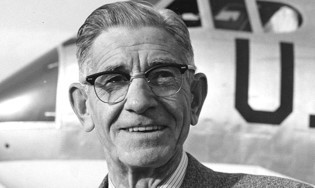A Tayside man’s extraordinary career as one of the first employees at airline firm Boeing has been honoured by the company.
The story of one of the company’s pioneers, James Alexander Duke, has been included in the aviation giant’s online collection of stories about unsung heroes.
Five generations of James Alexander Duke’s family have worked for the Seattle firm after he followed a hunch in 1921 that aviation would continue to be an important industry.
Mr Duke, who was born in Dundee in 1887 and grew up in Angus, started his 40-year career at the company after a spell as an aeronautical inspector for the British Air Ministry in Edinburgh.
His great-granddaughter Sheila Duke Garcia recalled: “Following a hunch that the greatest development of aircraft would occur on the West coast, at age 34 he started with the Boeing company shortly thereafter.
“It would be one year before the rest of his family would join him in his new hometown of Seattle after crossing the pond on a ship called Cornelius.
“They then built their own home and my great-grandmother would even sew my great-grandfather’s work suits.”
Mr Duke started in Plant 1, the Red Barn, and was part of the team which worked on the Boeing B-17 Flying Fortress, a four-engine heavy bomber which dropped more bombs than any other US aircraft during the Second World War.
“He kept many keepsakes and mementos from his time at Boeing, including photographs of the prototype 299 Flying Fortress in 1935, which was a variant of the B-17,” his great granddaughter added.
“During the Second World War my great-grandfather shared his ham radio with fellow Boeing employees at the Seattle and Washington plants to stay in touch with loved ones stationed in Kwajalein, Okinawa and Guam.”
Mr Duke retired in 1958 when he held the post as a general manager of inspection at Plant 2.
Among his prized possessions was a photograph of himself with the then president of Boeing, William Allen, taken at his retirement.
He returned to Friockheim in Angus, where he grew up, shortly before his death in 1972.
